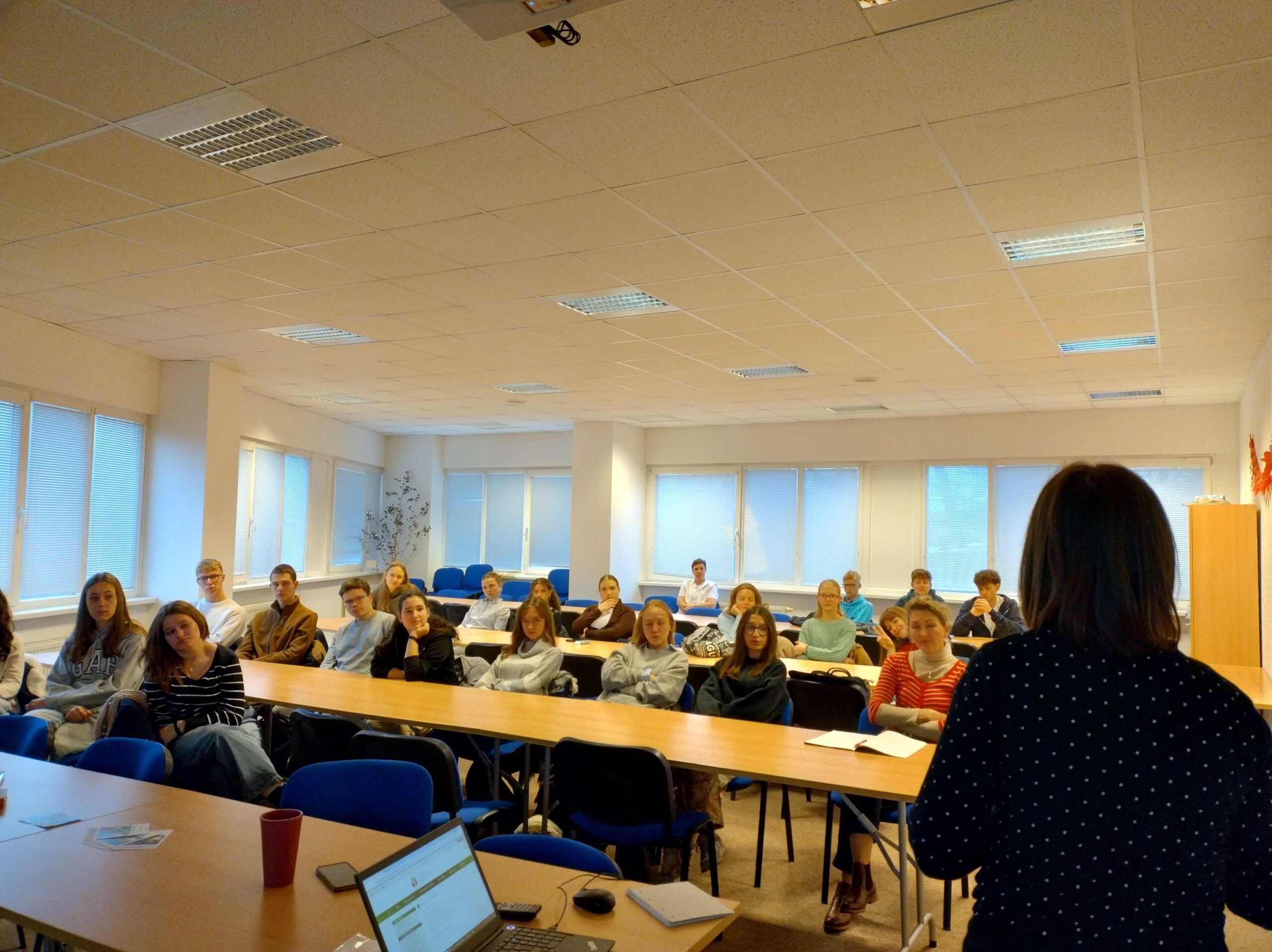
The Centre opened its doors to visitors before nine in the morning. The chilly November weather on Thursday, 13 November 2025, brought the first guests straight into the brightly lit meeting room, which soon filled with students from St. Ursula Grammar School – St. Ursula United School in Bratislava.
Guided by their teachers, the students viewed a narrated digital presentation of the herbarium collections of the Slovak Academy of Sciences. They learned about the structure of the herbarium collections of lower and higher plants, the existing live and preserved collections, and the importance of these collections for scientific research. They were also introduced to the international database of institutional herbaria, Index Herbariorum, coordinated by the New York Botanical Garden, which includes the SAS herbarium. The programme included information on the planned digitisation of herbarium specimens at the Department of Evolution and Systematics and on opportunities for public involvement in the iNaturalist citizen science initiative.
After the presentation, a discussion followed on the research profession, study prerequisites, and motivation for scientific work. The students also learned about opportunities for cooperation in biology olympiads and the Secondary School Professional Activity competition.
The programme continued with tours of the laboratories at the Department of Microbial and Plant Interactions and the Department of Experimental Plant Biology. At the Department of Microbial and Plant Interactions, students were introduced to the laboratory’s activities, visited molecular laboratories, and had the opportunity to try pipetting samples into an agarose gel. The principle of electrophoresis was explained, and they could observe the results of their own samples. A compact herbarium of lower plants was also presented.
At the Department of Experimental Plant Biology, students learned about the effects of abiotic stress on plants and the methods used to study them. They were particularly interested in demonstrations of detecting signalling molecules using fluorescence microscopy and spectrometry. In the cultivation room, they saw the growth of experimental plants and learned about phytoremediation techniques that plants use to remove contaminants from soil. The excursion concluded with a visit to the molecular biology laboratory, where modern analytical techniques were presented.
We thank all visitors for their interest and look forward to welcoming more guests interested in our scientific work.
Text: Tatiana Miháliková, Michaela Caboňová, Loriana Demecsová
Photo: Tatiana Miháliková




